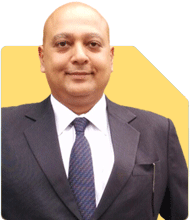Maxim Emmanuel |211 Answers |Ask -Follow
Soft Skills Trainer - Answered on Apr 30, 2024
An alumnus of the Xavier Institute of Management and Research, Mumbai, Maxim has over 30 years of experience in training young professionals and corporate organisations on how to improve soft skills and build interpersonal relationships through effective communication.
He also works with students and job aspirants offering career guidance, preparing them for job interviews and group discussions and teaching them how to make effective presentations.... more

How to apply and become a wildlife biologist
Here are a few below there are many more!
1
Tamil Nadu Agricultural University - [TNAU]
Coimbatore, Tamil Nadu
Apply Now
? 56.79K
1st Year Fees
M.Sc
--
7.7/10
Best in Infrastruct...
#2
Rashtrasant Tukadoji Maharaj Nagpur University - [RTMNU] logo
RTMNU
Nagpur, Maharashtra
Apply Now
PG Diploma in Science
? 9L
High. Package
7.6/10
Best in Infrastruct...
--
#3
Bharati Vidyapeeth Deemed University -
BVDU
Pune, Maharashtra
Apply Now
? 1.21L
1st Year Fees
M.Sc
? 19L
High. Package
7.6/10
896 User Reviews
Best in Social Life
--
#4
Kerala Veterinary and Animal Sciences University - [KVASU] Pookode logo
KVASU
Wayanad, Kerala
Apply Now
? 1.60L
1st Year Fees
M.Sc
International opportunities National Geographic or any similar!?
You may like to see similar questions and answers below
Sushil Sukhwani |357 Answers |Ask -Follow
Study Abroad Expert - Answered on Aug 31, 2023
Chocko Valliappa |234 Answers |Ask -Follow
Tech Entrepreneur, Educationist - Answered on Mar 22, 2024
Chocko Valliappa |234 Answers |Ask -Follow
Tech Entrepreneur, Educationist - Answered on May 17, 2024
Ramalingam Kalirajan |2476 Answers |Ask -Follow
Mutual Funds, Financial Planning Expert - Answered on May 17, 2024
Ramalingam Kalirajan |2476 Answers |Ask -Follow
Mutual Funds, Financial Planning Expert - Answered on May 17, 2024
Ramalingam Kalirajan |2476 Answers |Ask -Follow
Mutual Funds, Financial Planning Expert - Answered on May 17, 2024
Ramalingam Kalirajan |2476 Answers |Ask -Follow
Mutual Funds, Financial Planning Expert - Answered on May 17, 2024
Ramalingam Kalirajan |2476 Answers |Ask -Follow
Mutual Funds, Financial Planning Expert - Answered on May 17, 2024
Ramalingam Kalirajan |2476 Answers |Ask -Follow
Mutual Funds, Financial Planning Expert - Answered on May 17, 2024
Ramalingam Kalirajan |2476 Answers |Ask -Follow
Mutual Funds, Financial Planning Expert - Answered on May 17, 2024
Ramalingam Kalirajan |2476 Answers |Ask -Follow
Mutual Funds, Financial Planning Expert - Answered on May 17, 2024
Ramalingam Kalirajan |2476 Answers |Ask -Follow
Mutual Funds, Financial Planning Expert - Answered on May 17, 2024














.jpg)





